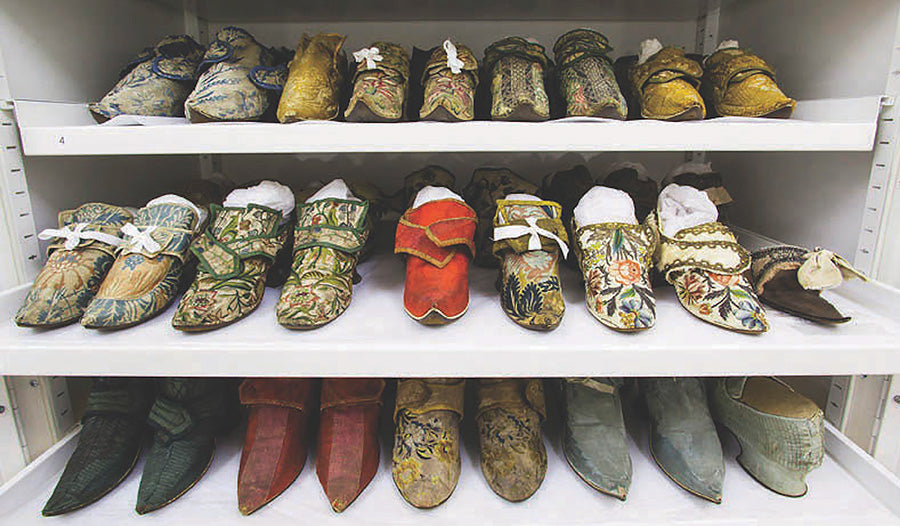
MY LIFE IN CLOTHES

Claire Wilcox is the Senior Curator of Fashion at the V&A and Professor of Fashion Curation at London College of Fashion. In Patch Work, she deftly stitches her study of fashion with the story of her own life lived in and through clothes, unfolding the spellbinding power of the things we wear.
A textile store was so long that it was hard to hear what people were saying at the other end, and if the phone rang we had to run to answer it. The store had not always been a store. Many years ago, one of the museum’s original galleries had been requisitioned, and it had been furnished with second-hand specimen cupboards from the Natural History Museum. The gallery’s arching metal struts had once offered views to the galleries below but now were boarded over and blotted with thick cream paint to keep the light out. In the textile store, the outside sounds of the museum were muffled, although sometimes we could hear the laughter of school parties as they passed by with their clipboards.

The two of us were doing the audit, the quinquennial, for it took that long. Every August, the department closed for a fortnight while we went through the cupboards and drawers to check that each object was in its designated place. If it was, we placed a tick on our checklist. Now and again something was not where it should be, but we would usually find it in the drawer above or the drawer below, perhaps misplaced by a curator fatigued by the stale air and the demands of visitors: cloth workers; historians of weave; practitioners of stitch. Sometimes, pieces were nowhere to be seen. Regretfully, we marked them as Not in Place and carried on.
We worked in pairs so as not to make mistakes, like nurses doing a late-night drug round. We took it in turns to be the person with the pencil and checklist, and the person reading out the number attached to each piece, given to it when it was acquired by the museum. For example, T.45–1975 meant ‘T’ for textile and ‘45’ for the 45th object acquired in 1975. Older acquisitions had tiny labels made of parchment, with the number and date written as if with a quill. Some predated the museum’s organisation into departments and so did not have a prefix, merely a number. Some did not think to include the full date, for example marking ’59, rather than 1859, or ’99 rather than 1899, as if the nineteenth century would never end.

In recent years we had written the numbers and dates on woven tape using a laundry pen. The ends were tucked under and stitched onto the fabric, like a school nametape. In the case of hard objects, like shoes, someone with a steady hand painted the letters and numbers on the underside, using a fine brush. Sewing labels on was one of the jobs we had to do when we weren’t doing audits and it was something I enjoyed, making my stitches as small as possible; thinking it my legacy. Sometimes, we spent the afternoons answering enquiries. Now and again we’d receive a letter addressed to the Victorian Albert Museum; it always amused us…
Excerpt from Patch Work: A Life Amongst Clothes, by Claire Wilcox, published in Issue 100 Anniversary. Find out how to read the rest of the article here.

We’re delighted that Claire Wilcox will be taking part in the first Selvedge online talk of 2022, My Life in Clothes, on Wednesday 9 February.
Our relationship with our own clothes is deeply personal and charged with a sense of self. Curators, designers, writers and makers, our speakers will bring their own experience of their life in clothes, inspired by both their professional and personal life, as well as their context in time and place. We are so excited to be joined by Claire Wilcox, Kristína Šipulová, Amber Butchart and Sewstine.
Find out more or book tickets here:


1 comment
Dear Selvedge. I see that My Life In Clothes will be offered on Wed. Feb. 9th at 18::GMT. on ZOOM. I live in Victoria Canada which is approx. 8 hours behind your UK time., and I will not be home then. WILL I BE ABLE TO ACCESS THE ZOOM SESSION AT ANOTHER TIME?. Thanks, Jan